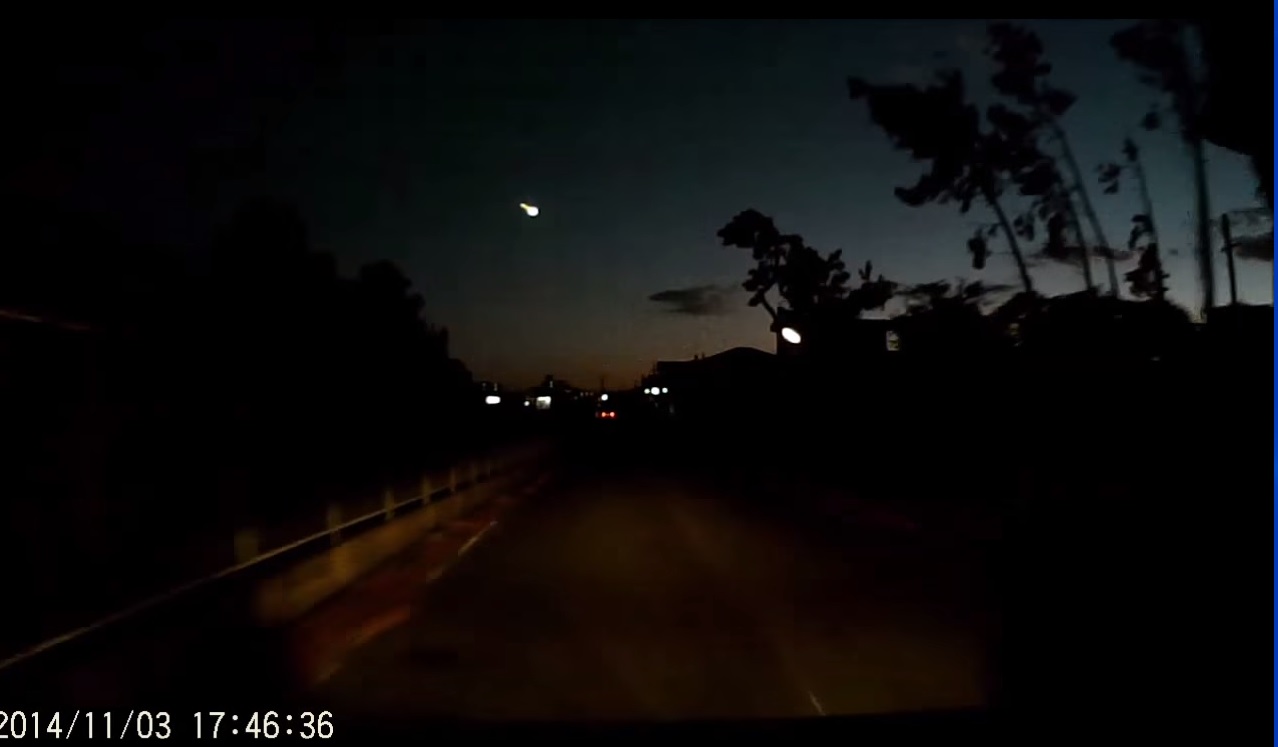Dazzling Fireball Over Japan Is Latest Magnificent Meteor (Video)

Monday, it turns out, was a busy night for fireballs. A brilliant fireball streaked over Japan and was captured on video by several observers, making it only the latest fiery display of space rocks from the heavens.
The Japanese dispay followed three other fireball reports from across the U.S., including a dazzling fireball that surprised observers across West Virginia and other eastern states. One of those U.S. reports included a fireball over Chicago that appears to be man-made, a nighttime parachute stunt by the energy drink Red Bull.
But the other fireballs, including the event over Japan, were the real deal. In Japan, observer Tam Shin posted a video of the fireball view on YouTube, as the object streaked across the early evening sky. According to a translation of the video description, the sighting took place in Koga city, outside Tokyo.
The fireball appears to be traveling east to west, which means if it is a space rock, it could be part of the Taurid meteor shower.
Another amazing video of a fireball was captured at Japan's Fukuoka airport, according to this BBC report. It's unclear if the videos are of the same fireball.
Back in the United States, video of the West Virginia fireball was captured by the dash camera on a cruiser with the Benwood Police Department. Over 500 people made reports to the American Meteor Society about the fireball.
Both the West Virginia fireball and the Japan fireball appear to have a greenish tint to them.
Get the Space.com Newsletter
Breaking space news, the latest updates on rocket launches, skywatching events and more!
Bill Cooke, head of NASA's Meteorite Environment Office at the Marshal Space Flight Center, said in an email today (Nov. 5) that the color can be the result of the meteor's composition, and blue-green colors are often attributed to magnesium. But Cooke said a green or blue color is also typically associated with faster meteors. Faster meteors heat up the air around them, and depending on the composition, this can also create a colorful glow.
On Monday, Cooke told Space.com that fireball meteors are common this time of year, and he expects there will be more sightings this week.
Follow Calla Cofield @callacofield.Follow us @Spacedotcom, Facebook and Google+. Original article on Space.com.
Join our Space Forums to keep talking space on the latest missions, night sky and more! And if you have a news tip, correction or comment, let us know at: community@space.com.

Calla Cofield joined Space.com's crew in October 2014. She enjoys writing about black holes, exploding stars, ripples in space-time, science in comic books, and all the mysteries of the cosmos. Prior to joining Space.com Calla worked as a freelance writer, with her work appearing in APS News, Symmetry magazine, Scientific American, Nature News, Physics World, and others. From 2010 to 2014 she was a producer for The Physics Central Podcast. Previously, Calla worked at the American Museum of Natural History in New York City (hands down the best office building ever) and SLAC National Accelerator Laboratory in California. Calla studied physics at the University of Massachusetts, Amherst and is originally from Sandy, Utah. In 2018, Calla left Space.com to join NASA's Jet Propulsion Laboratory media team where she oversees astronomy, physics, exoplanets and the Cold Atom Lab mission. She has been underground at three of the largest particle accelerators in the world and would really like to know what the heck dark matter is. Contact Calla via: E-Mail – Twitter









